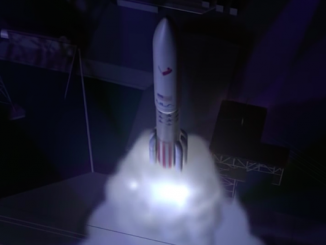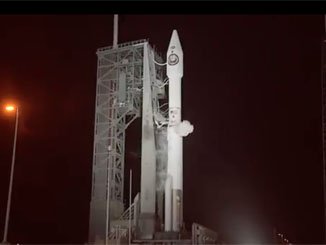
Launching new Global Positioning System navigation satellites at a rate not seen in 21 years, this year’s fourth such deployment is coming up at midday Wednesday by an Atlas 5 rocket from Cape Canaveral.
The United Launch Alliance booster is scheduled for liftoff at 1:21 p.m. EDT at the opening of an 18-minute window.
The $245 million GPS 2F-8 satellite will join the orbiting navigation network as the 31st functioning spacecraft – including four launched in 2014 – and 8 backups.
It has not been since 1993 that the Air Force launched four or more GPS birds in a single calendar year.
Now, booster availability coupled with the need to replenish the orbital fleet has allowed so many GPS satellites to come to the launch pad this year.
The lifting has been accomplished by a pair of Delta 4 rockets, launching from Cape Canaveral on Feb. 20 and May 16 plus an Atlas 5 rocket flown Aug. 1, respectively.
“It’s been a very, very busy year, but it’s been an energizing year in the sense (that) it’s exciting to see results nearly real-time. We launch up a satellite and once it’s put into the constellation we start seeing improvement in that accuracy. That’s just an exciting feeling,” said Col. Bill Cooley, director of the Air Force’s Global Positioning System Directorate.
The Launch Readiness Review will be held Monday and the rocket rolls to the pad on Tuesday. The countdown starts at 6:21 a.m. Wednesday.
It will take three hours and 24 minutes from launch until spacecraft separation, delivering the satellite into an orbit 11,000 nautical miles high and tilted 55 degrees to the equator.
This will be the 50th Atlas 5 launch and the 89th overall for United Launch Alliance, a partnership between Boeing, builder of the Delta family or rockets, and Lockheed Martin, developer of the Atlas.

“50 is amazing and we’re very proud to have reached this milestone,” said Ron Fortson, United Launch Alliance’s director of mission management. “But what really matters is the next one. That’s what it is all about — one launch at a time.”
Majestically clearing the towers at Complex 41, the Atlas-Centaur rocket will begin pitch, yaw and roll maneuvers to obtain the proper northeastward heading while minimizing aerodynamic stresses on the 189-foot-long rocket.
Atlas will push through Mach 1 in 78 seconds and the region of maximum air pressure at 91 seconds, as the RD-180 main engine consumes kerosene fuel and supercold liquid oxygen.
Approaching booster engine cutoff four minutes into flight, the vehicle is burning propellants at a rate of 1,600 pounds per second, weighing only a quarter of what it did at liftoff before the first stage separates and the Centaur lights.
It is a lengthy first firing of Centaur that parallels the eastern seaboard and flies above the North Atlantic, putting the vehicle into a preliminary orbit of 11,000 by 90 nautical miles.
There, the rocket coasts for three hours – crossing Europe, the Middle East and Indian Ocean – before restarting the RL10 main engine for 90 seconds south of Australia to circularize the orbit and enter the GPS constellation.

GPS 2F-8 will take Plane E, Slot 1 of the network in a shuffling plan that ultimately enhances the network. It should be checked out and operational in mid-December.
The satellite currently in that spot – GPS 2R-4, launched aboard Delta 278 in May 2000 – will be moved into a backup role.
This is the eighth of 12 Boeing-built Block 2F spacecraft being manufactured to form the backbone of the GPS fleet for the next 15 years. The full dozen satellites are due to be launched by January 2016.
Three more Block 2Fs are due to launch next year – in March aboard a Delta 4 and in June and September aboard Atlas 5s.



